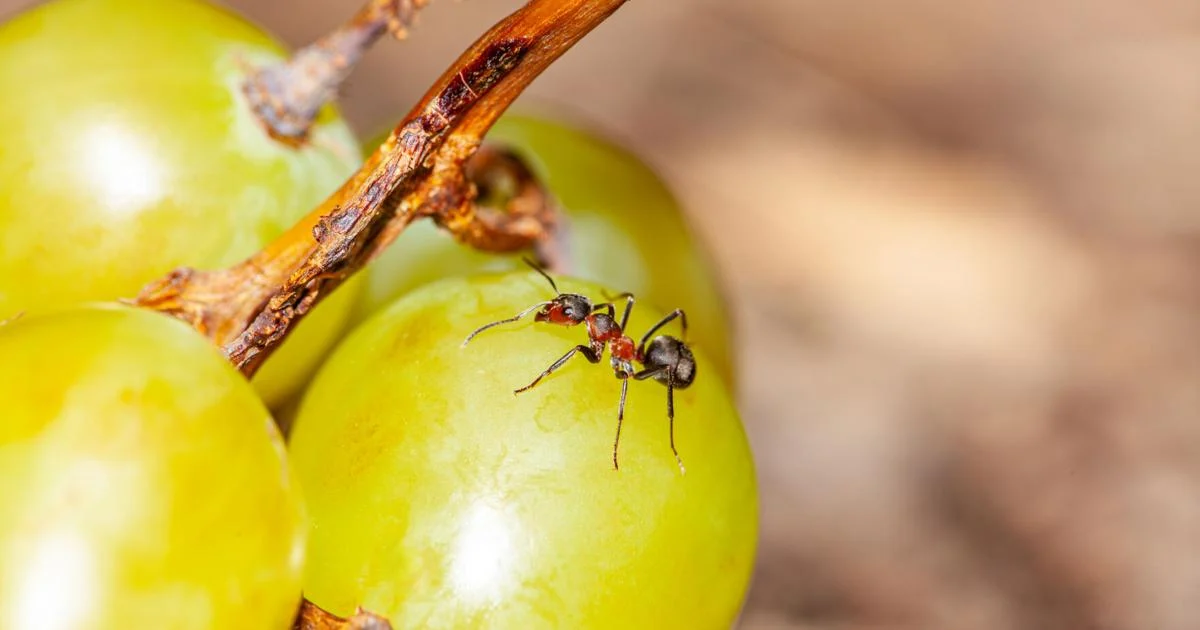By By Clellie Lynch
Ants, ants and more ants!
Small black ants scurry hither and thither. Rarely do I see more than two or three of these little fellas at the same time. They may be on the window sill, on the kitchen table, near the stove, on the bathroom sink, on my desk walking nonchalantly across a page.
One moment these tiny dark dots stand stock still and stare at me; blink, wiggle their kinked antennae, and then dash away, scrabbling across the rumpled newspaper, disappearing into its folds.
Ants often appear indoors after wet weather is followed by withering heat. Perhaps they don’t like soggy food, or maybe they were flooded out of their colonial homes and it was still too wet to rebuild.
Fortunately this is not a mass incursion, an unstoppable invasion, where hundreds climb up and over the threshold in search of food. No turning on the light at night and seeing a mass of ants feasting on a piece of toast accidentally dropped on the floor. Nor are they army ants who, like miniature automatons, march in formation, never missing a step … or a piece of food for that matter.
I haven’t a clue as to what kind of ants these are. Ants are insects that are classified with bees and wasps in the order Hymenoptera. There are over 150,000 Hymenoptera species worldwide. In the ant family, Formicidae, there are more than 13,000 different ones you might encounter, with many more, the myrmecologists (ant experts) say, to be discovered and classified.
Ants come in many colors, mostly variations of black, brown, yellow or a ruddy red and in many sizes, though none so large as those featured in the 1950s movie, “Them.” Hmm. Maybe someone is working on a blue ant movie, working title: “Them Avatar.”
Some are carnivorous, some are scavengers, some thrive on plants. And thrive they do. Ants have existed on Earth long before any humans!
They live and play just about anywhere. Ants like to build their homes in the cracks between the bricks on our patio. Even if you brush away the small sandy pyramids, the entrance to the colony below, you can’t thwart them. The next day, new pyramids appear.
Ants invariably come inside when you bring in a bouquet of freshly cut peonies. They love the aroma, the nectar, contrary to the myth that a peony blossom cannot open if the ant doesn’t cut away the greenery. The ants are just there to feast on the nectar.
Ants have been noticed, studied and written about for centuries, not just descriptions of their very well-organized, productive and cooperative colonies, but also advice as to how we, as humans, can learn from them: “such loyalty, such astonishing organization, such indefatigable persistence.”
The Greeks mythologized ants into a super army, the Myrmidons, a troop of soldiers that would be so persistent as to never stop killing. Bismarck thought German society should be based on the magnificently efficient and uncomplaining ants. This, from the man who chose 65 as the retirement age, for that was when his analysts told him many of the workers would be dead already.
Cleverly, ants do grow wings when it’s time to mate. Once a female is fertilized she can then fly to a new territory and start her own colony. Oddly, the new colony comes to term in 9 months.
These homes are often underground, tunnels within tunnels, with a ruling queen and thousands of workers. Some build mounds laced through with tunnels, like the dreaded fire ants that ruin fields with mounds, destroy crops, but also inflict a rather painful bite when disturbed. None are here in the Northeast yet (except for the invasive European fire ant known as the little red fire ant) …, but they have become a problem down south. Contrary to what some ill-informed people may think and the ants have gotten the memo, our climate IS changing.
The ant-loving species may follow. How different our Berkshire bird world would be with antwrens, antthrushes, ant pittas, ant shrikes, ant-tangers and ant vireos!
Ants have an amazing defense system: biting, stinging, injecting toxic acid into the enemy and emitting a foul smell when bothered.
Their common names are, well, common, referring often to what the ants do: carpenter ants, garden ants, harvester ants, crazy ants, sugar ants, bullet ants, and fire ants.
Danny takes a grape from the bunch in the bowl and notices an ant slip-sliding on a light red grape. He lifts up the bunch and, aargh! there is a writhing mass at the bottom. Grapes, bowl and ants are moved immediately outside.
Here they are, sporadically seen running about this way, that way and then back around again, then a mad dash. Never ever in a straight line. There appears to be no rhyme or reason for where they are or what they are doing. Crazy ants. Often they are by themselves, the only ant in the room. Have they revolted against the rigid, non-ending work ethic? Have they discovered free will? Crazy anarchist ants. Maybe I have discovered an ant new to science … this species, I’ll dub the Crazy Anarchist Grape Ant!
But the weather has been nice for a while. Time to leave us, you little crazy anarchist grape ants, thank you very much!
